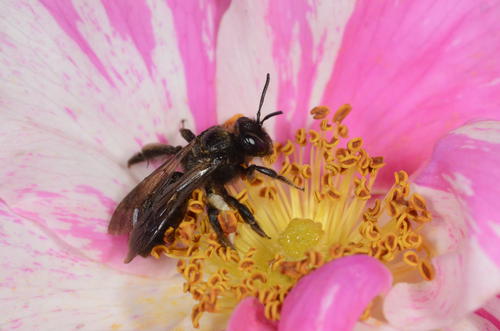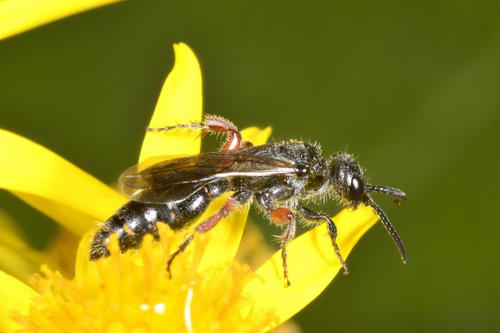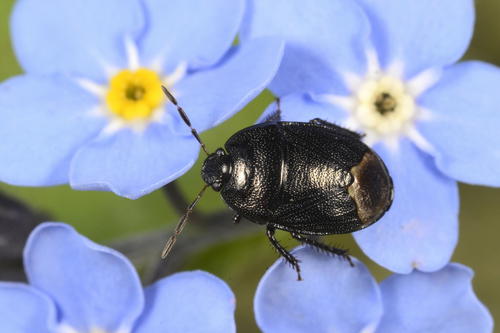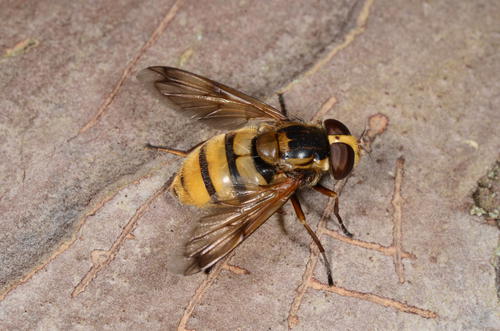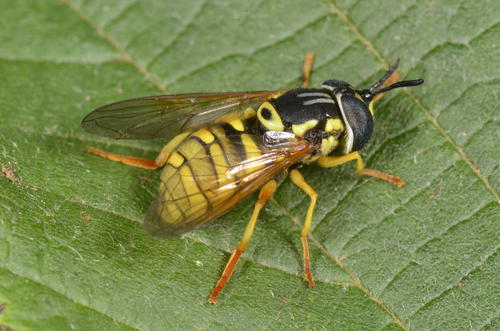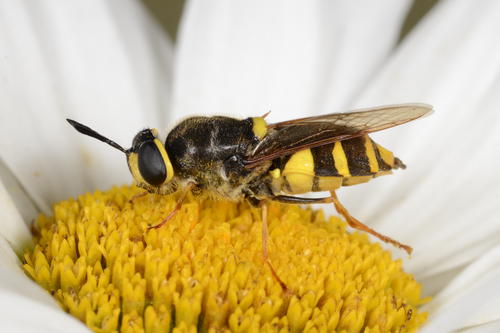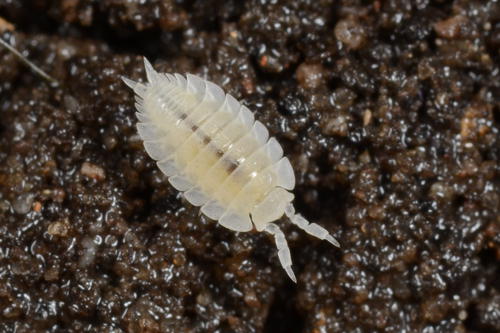Invertebrate Records from a Worcestershire Garden 2012
Denise Bingham
This year it seemed that our garden in Kidderminster was a good place to be as several unusual and rare species turned up. Guess it goes to show that keen observation of a small area can provide some good finds! Thanks to John Bingham who did some of the identification of my various finds.
Andrena nigrospina, (Thompson, 1872). Hymenoptera: Andrenidae . RDB1(Red Data Book).
This RDB1 solitary bee is well known to local naturalists at its Blackstone Nature Reserve site near to the heathlands of Devil's Spittleful. (Trevis 2009). A large black bee was seen in the garden on 20 July feeding on Rosa mundi. It was caught and very surprisingly we identified it as Andrena nigrospina. Having made some effort to see this bee at Blackstone over the last few years we could hardly believe it had appeared in the garden. A photograph was sent to Geoff Trevis who confirmed our identification. Our garden is within 0.5km of acidic semi-improved sandy grassland at Hurcott so we can only assume the bee had flown somewhere from there where it may nest to find nectar on our garden plants. This links in with Brett Westwood's sightings of the bee at Ismere about 2km to the north.
Tiphia femorata, (Fabricus,1775). Hymenoptera:Tiphiidae.
This rather odd-looking wasp which looks more like a rove beetle than a wasp was found on garden flowers on 25 August. The wasp is a parasitoid on scarabaeid beetle larvae (recorded hosts include Aphodius, Rhizotrogus and Anisoplia). The female burrows into the soil to find a larval host in its cell, stings the larva and kneads it with her mandibles. An egg is laid on the larva which hatches to produce a larva which takes about three weeks to consume its host. (BWARS web site). Thanks to Geoff Trevis who confirmed our identification and reported that Andy Jukes has recorded it at Blackstone and Burlish Top.
Sehirus luctuosus , (Mulsant & Rey,1866). Hemiptera: Cydnidae.
After Jane Scott's report in Worcestershire Record (No32 April 2012, p.27) the hunt was on to find this shieldbug as Forget-me-not was common in our garden. On a sunny day on 8 May I found one on the garden path, thereafter many were seen over the following weeks near Forget-me-not plants. We were spotting them running around on bare soil next to Forget-me-not flowers. Difficult to estimate numbers but certainly dozens must have been present in several areas of the garden. Not to be out done John Bingham searched Forget-me-not plants on the Devil's Spittleful NR and managed to locate two bugs on 23 May. They do hide under the leaves but in warm weather are quite active and can be seen running over bare ground or on pathways near the host plant.
Volucella inanis, (Linnaeus, 1758). Diptera: Syrphidae
This hoverfly is now well established in the county but still rather scarce in north Worcestershire. It did finally turn up in our garden on 16 August. In the following week several more were seen, both male and female.
Chrysotoxum verralli, (Collin, 1940). Diptera: Syrphidae
I saw several of these attractive hoverflies on 8 July seen taking nectar from various flowers.
Stratiomys potamida, Meigen, (1822). Diptera:Stratiomyidae, Solider-fly.
This attractive solider-fly, the Banded General, is a local species associated with wet places such as pools or carr woodland, occasionally recorded around the county (Stubbs and Drake 2001). So it was not expected to appear in our garden feeding Leucatheum spp. flowers. I recorded it on 19 August and saw another one a few days later. The nearest wet site is Podmore Pool with its carr woodland backwater some 0.5 km distant.
Platyarthrus hoffmannseggii , (Brandt, 1833). Arthopoda: Isopoda
I found a colony of a small white woodlouse on the edge of the garden lawn on 23 June that was identified as Playtharthrus hoffmansegii. The distinctive blind woodlouse is apparently common in Worcestershire but Kidderminster is near the northern limit of this species. A number of Lasius niger ants were nearby and appeared to be associated with the woodlice. The Woodlouse Atlas (Gregory 2009) says it tends towards calcareous soils, perhaps because they warm up quickly.
References / Information
Bantock & Botting, British Bugs; www.britishbugs.org.uk
Gregory, S. 2009. Woodlice and waterlice (Isopoda:Oniscidae & Asellota) in Britain and Ireland. FSC Publications. Preston Montford.
Scott, J. 2012. Interesting bugs at Woodbank, Astley Burf, 2011 Worcestershire Record. 32:27.
Southwood, T. & Leston, D. 1959 Land and Water Bugs of the British Isles. Warne.
Stubbs, A & Drake, M. 2001. British Soliderflies and their Allies. British Entomological and Natural History Society.
The UK Bees, Wasps and Ants Recording Society (BWARS). www.bwars.com
Trevis, G. (2009) Andrena nigrospina. Worcestershire Record. 27:23.
Images
Fig. 1. Andrena nigrospina
Fig. 2. Tiphia femorata
Fig. 3. Sehirus luctuosus
Fig. 4. Volucella inanis
Fig. 5. Chrysotoxum verralli
Fig. 6. Stratiomys potamida
Fig. 7. Platyarthrus hoffmannseggii
